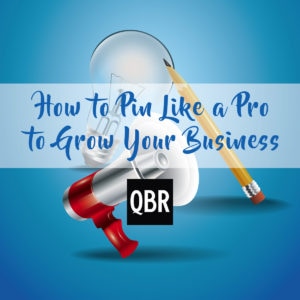If you’re not pinning, you’re not winning.
Okay, that’s a cliché way to put it; but really-Pinterest is a fantastic tool for your business for a variety of reasons.
- With more than 150-million Pinterest users, odds are most of your audience are there.
- Unlike other social media channels, Pinterest’s posts last forever. You can see great interaction (like directing traffic to your site) weeks after creating a post.
- 87% of Pinners buy something because of Pinterest. It’s a great way to drive sales.
With a little bit of strategy, you can reap the rewards of Pinterest marketing (if you need to create a Pinterest business account, check out Pinterest’s guide here). Check out our tips below on pinning like a pro to grow your business.

Decide How Often to Pin
With Facebook and Twitter, you can post too often and hurt your social media engagement.
Not so with Pinterest. There is no “too much” posting activity because the algorithm is completely different. Pins show up in your audience’s feed based on a variety of factors, but the date of creation is not one of them. You don’t need to worry about overwhelming your followers by pinning often.
While more is good, consistent is best. Your Pinterest presence will be stronger if you post consistently rather than sporadically upload several pins. Start off with five pins a day, and increase it as much as you can maintain. Different studies of brands recommend aiming for 5-30 pins a day.
Decide What to Pin
Like other social media channels, you shouldn’t only push sales. Customers will get bored and your effectiveness will go down.
Instead, focus largely on providing valuable content from other sources. For example, yogurt company Chobani provides a how-to board with pins from other websites giving tips for living healthy. Many of the pins don’t directly deal with yogurt (like recipes), but the focus on health is on-brand. This provides variety and value, which builds your following to reach when you provide your own content.
But when you pin your own content, remember to show and not tell. Show your product in action, and how great it will fit into your customer’s life. REI’s kayaking board, for example, shows the crazy adventures their kayaks can handle across the world.
Deciding Where to Pin
You want to create Pinterest boards that are simple and clear. Use popular keywords in your board names to help them be found easier.
You can also design branded board covers to give your profile a consistent look (see how we did it here).
Creating a Pin
There are simple tricks you’ll want to use to optimize your pin.
To optimize the image (according to this research)
- Use keyword(s) in the image file name
- Design a tall pin with a 2:3 or 4:5 ratio
- Choose reddish-orange colors over blueish ones
- Include more than one dominant color
- Use medium light
- Make less than 10% of the image background
- Keep photos free of human faces
- When possible, use videos over images (it’s one of Pinterest’s predicted marketing trends for 2017)
To optimize the Pin description
- Avoid hashtags. There’s no benefit to using them (unlike Facebook and Twitter), and too many can hurt your pin ranking.
- Avoid promotional and sales-like phrases such as “now 50%” or “buy today”
- Use keywords in the description.
- Aim for 200 to 300 words in the pin description (but keep in mind the only the first 100 characters or so will appear when the pin is shown in search results. Viewers will need to click the pin to see the full description.)
- Include a link (and tag the original creator if the pin is not yours) in the pin description. These will be bolded and help your pin stand out.
Promoting Your Pinterest Account
You can promote your Pinterest account with a variety of ways.
- Add your Pinterest username to your email signature.
- Talk up your account on your other social media channels.
- Include screenshots and links of your top pins in your newsletter.
- Use “Pin It For Later” links in your Google+ posts. After you publish a blog post, pin it to one of your boards. Copy the pin’s url. In your post, include the pin it for later link. It’s an easy way for your audiences to bookmark your post.
Engaging on Pinterest
Engagement on Pinterest is pretty simple. First, you’ll want to follow other accounts to find content to pin (plus, they may decide to follow you back!).
Second, engage with those who engage with you. When someone pins your content, you can comment on the pin and tag them (“thanks @JohnDoe for pinning my content”).
The more active and engaged you are on Pinterest pinning quality content and interacting with other accounts, the more engagement you will see!
Pinterest is a great tool to expand your digital presence and brand awareness, direct traffic to your website, drive sales, and connect with customers. If you’re ready to start or improve your Pinterest marketing, but lack the time, Quick Business Resolutions is here for you! Our knowledgeable team can run your account for you, freeing up your time to manage your business.
